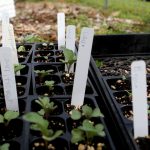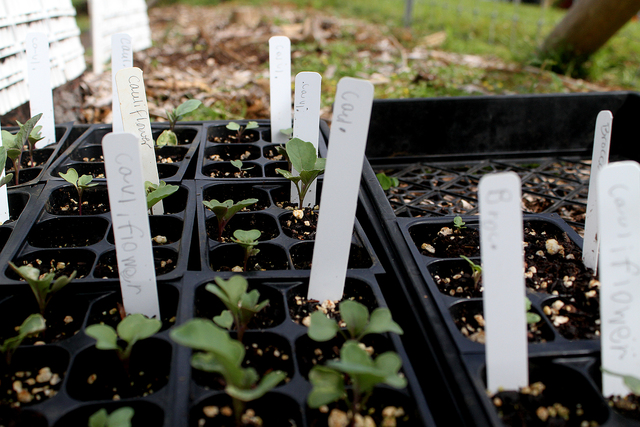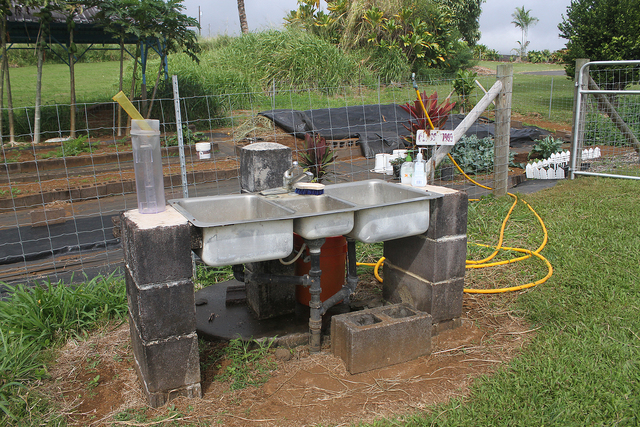Even the smallest garden bed requires an abundance of nurturing, and school gardens are no exception.
A dozen educators from around the island met with the state’s farm-to-school coordinator Saturday for an overview of the program’s current initiatives and best practices for helping gardens thrive.
“Those of us who are in it know how important this is,” said Donna Mitts of the Kohala Center’s Hawaii Island School Garden Network. The network supports more than 60 school garden programs on the Big Island.
A state farm-to-school program was established in 2015 by Act 218, but school gardens have existed in Hawaii for decades.
“When I came on board, people were like, ‘I’m so glad we finally have farm to school,’” said state coordinator Robyn Pfahl. “But there have been pioneers that have put this … together way before the Legislature ever got wind of it.”
Those pioneers, namely the Hawaii Farm to School and School Garden Hui, in turn helped Pfahl figure out how to best serve schools while still navigating the maze of state and federal regulations.
Pfahl works in the state Department of Agriculture and is a self-described “one-woman show” within the department.
“That’s OK because I have an army out there,” she said. “I learn about your programs, I hear about what’s going on and what you need to help your programs thrive … what the hui is best at is sharing their best practices.”
The Haaheo Elementary School garden in Hilo, for example, was first planted in 1999. Since then, it has gone through on and off periods, depending on how invested parents, teachers and students were in the project and incorporating the garden into school life.
“We’re trying to help our kids have a connection with what they eat,” Pfahl said. “Then they really appreciate the thing, and they care for it … we want them to think deeper.”
School gardens often are integrated into classroom curricula.
“Some go really hard on the math, on the STEM (science, technology, engineering and math),” Pfahl said. Other programs use gardens to teach Hawaiian cultural history, while others teach business by selling herbs to local restaurants.
“It’s really fun to see when the gardens start taking off and the kids take over,” Pfahl said.
In any stage of school garden cultivation, however, food safety must be kept in mind. Luisa Castro with the University of Hawaii at Hilo offered an overview of food safety and hygiene best practices.
“You want to protect your produce,” Castro said. “You’ve spent so much time on it with your kids. Treat your food like gold.”
Children are one of the more susceptible populations to food-borne illness, making outbreak prevention all the more important. Leafy greens, melons and tomatoes tend to be the worst offenders from a garden.
In East Hawaii, greens also are more prone to being contaminated with the parasite that carries rat lungworm disease. During Saturday’s event, Kay Howe of the Hawaii Island Rat Lungworm Disease Working Group presented her ongoing research into integrated pest management techniques.
Castro also gave an overview of the different regulations involved and permits needed to serve school-grown food.
“We have a bounty in Hawaii that we can grow, and it’s so much fun,” Pfahl said.
Pfahl, Castro and Howe will offer the best practices workshop again for West Hawaii from 8:30 a.m.-noon Saturday at Holualoa Elementary School. The event is free but pre-registration is required. For more information, contact Mitts at dmitts@kohalacenter.org.
A selection of curriculum materials can be found at kohalacenter.org/hisgn/hisgn-resources/school-garden-curriculum.
Email Ivy Ashe at iashe@hawaiitribune-herald.com.









